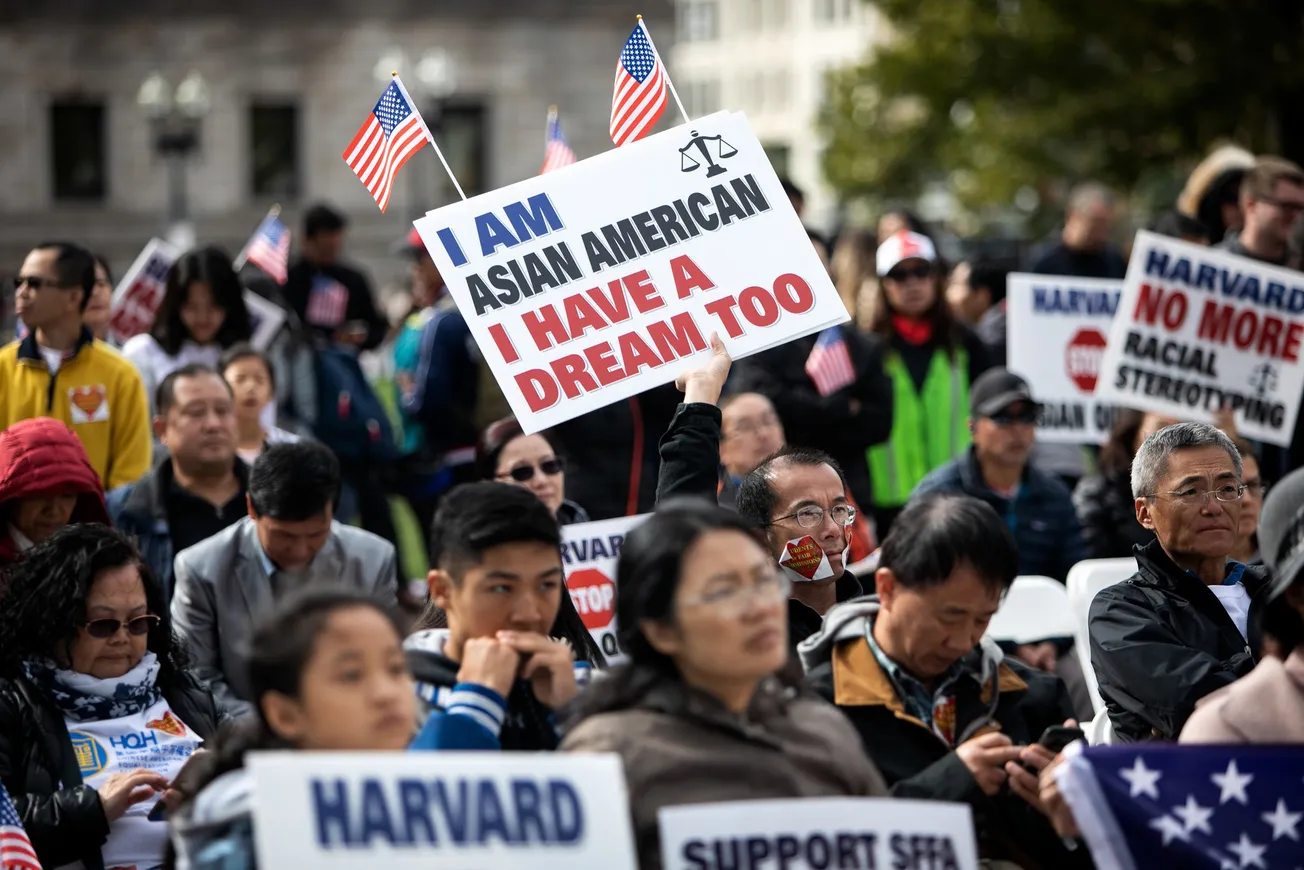Table of Contents
An ongoing lawsuit against Harvard University threatens a sacrosanct admissions policy of America’s elite institutions: affirmative action. Although the practice has been challenged before, this case is among the first to target private universities, like Stanford, that have been able to escape state-level affirmative action prohibitions. Should it reach the Supreme Court as expected, a loss by Harvard could end the policy nationally. In response, Stanford joined 14 other private institutions in filing an amicus brief in defense of the practice.
The lawsuit points out that Harvard discriminates by, on average, assigning Asian Americans much lower personality scores than other racial groups. Ugly historical echoes hinder Harvard’s case; in the late 1920s, Harvard began to consider factors like “character,” reminiscent of contemporary “personality scores,” in order to limit its number of Jewish admits, before moving to a strict Jewish quota.
The result of such discrimination is that Asian students receive the equivalent of a decrease in 140 points of 1600 on the SAT in the admissions process according to one study. Meanwhile, African American and Hispanic students see increases of 310 and 130 points respectively (greater than the amount provided for legacy and athletic preference). Meanwhile, low-income students receive a boost of only 130 points.
As a result of perceived discrimination today, companies like Asian Advantage, an admissions-counselor in the Bay Area, help students appear “less Asian” on applications. What a sad state of affairs: while white students at our high schools were falsely claiming to be hispanic, Asian-American students are coached on how to beat the Asian “quotas.”
Though affirmative action was developed to close persistent gaps in opportunity between demographic groups, it has been the subject of nearly constant litigation and controversy, in part because Title IV of the Civil Rights Act explicitly prohibits racial preference in admissions: “No person in the United States shall, on the ground of race, color, or national origin… be subjected to discrimination under any program or activity receiving Federal financial assistance.” The Court allowed the practice of affirmative action as an exception because it seemed the most effective way to close persistent racial gaps. However, it was not envisaged as a permanent solution. In 2003, Justice Sandra Day O’Connor, a member of Stanford’s class of 1950, upheld the policy, writing for the Court in Grutter v. Bollinger that the policy should be “a temporary bandage rather than a permanent cure.”
And let’s be clear that affirmative action hasn’t done its job: African American and Hispanic representation at elite universities is actually lower than it was 35 years ago, and the minority students who attend appear to be primarily upper class: 71 percent of Hispanic and African American students at Harvard are not from low-income backgrounds (unsurprising, given that only 4.5 percent of Harvard students are from households in the bottom quintile of income). Elite universities are able to pat themselves on the back and pad their promotional materials with pictures of a diverse student body, while leaving minority students genuinely trapped in cycles of poverty almost untouched.
Could it be that the issues keeping disadvantaged students out of our top universities do not spring from admissions officers’ biases but from complex social pathologies, like poverty traps and a lack of educational opportunities in poor communities? Using affirmative action to rectify these issues is like covering a gunshot wound with a band-aid and hoping the injury heals itself.
Stanford’s amicus brief seems to miss the entire point of the debate. It selfishly focuses on the benefit of these students to the University rather than a larger social good, claiming that although “the plaintiffs here suggest that holistic review should be conducted without regard to race… it is artificial to consider an applicant’s experiences and perspectives while turning a blind eye to race,” and that “diversity encourages students to question their own assumptions.” We strongly agree that colleges should promote a diverse, interesting student body. We do not agree, however, that racially-based affirmative action is the best way to promote true diversity. In light of the numbers above, it seems that universities value race more than factors like income. This is patently ridiculous; even if applicants check the same racial box, they may have little in common in terms of the experiences they bring to campus. An African applicant raised in Africa has a totally different experience than an African American applicant. Conversely, two students of different races but from bourgeois suburbia are likely to bring a similar perspective.
Our admissions office already considers many factors more impactful and less controversial than ‘race’ to discern the diversity an applicant would add to campus. Income, cultural background, geography, ideology — all these factors are more important than a cosmetic characteristic like race. Stanford unequivocally has one of the most qualified applicant pools in the world, and doesn’t need to follow the herd of universities who feel that they need this program to maintain a diverse student body. We have no need for this crude policy.
No matter what the Court decides, Stanford would do well to remember not just why this program was established but also why it was temporary. It was an experiment, which has failed, and resulted in an abhorrent system of racial premiums. Stanford should spend its time giving aid to those who need it most: low-income and working class students, who are sorely underrepresented. Unlike most of our peers, Stanford was founded as an inclusive institution, coeducational from the start, and without strict racial quotas. Fortunately, we are not Harvard. Let’s stay true to our heritage.









